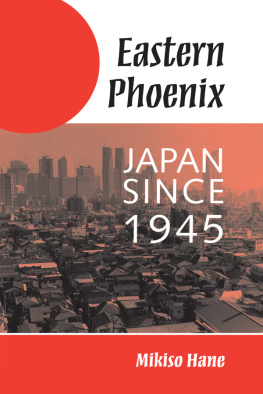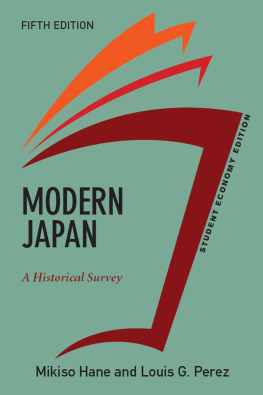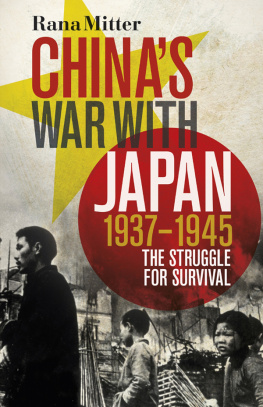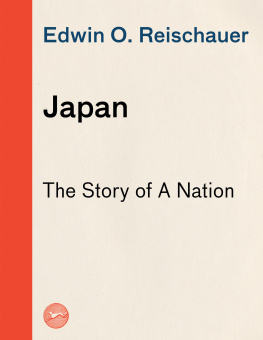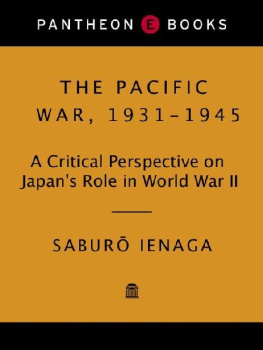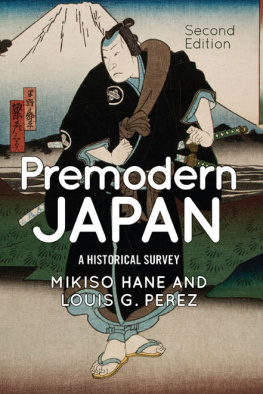Hane Mikiso - Eastern Phoenix: Japan Since 1945
Here you can read online Hane Mikiso - Eastern Phoenix: Japan Since 1945 full text of the book (entire story) in english for free. Download pdf and epub, get meaning, cover and reviews about this ebook. publisher: Taylor & Francis Group, genre: Politics. Description of the work, (preface) as well as reviews are available. Best literature library LitArk.com created for fans of good reading and offers a wide selection of genres:
Romance novel
Science fiction
Adventure
Detective
Science
History
Home and family
Prose
Art
Politics
Computer
Non-fiction
Religion
Business
Children
Humor
Choose a favorite category and find really read worthwhile books. Enjoy immersion in the world of imagination, feel the emotions of the characters or learn something new for yourself, make an fascinating discovery.
- Book:Eastern Phoenix: Japan Since 1945
- Author:
- Publisher:Taylor & Francis Group
- Genre:
- Rating:3 / 5
- Favourites:Add to favourites
- Your mark:
- 60
- 1
- 2
- 3
- 4
- 5
Eastern Phoenix: Japan Since 1945: summary, description and annotation
We offer to read an annotation, description, summary or preface (depends on what the author of the book "Eastern Phoenix: Japan Since 1945" wrote himself). If you haven't found the necessary information about the book — write in the comments, we will try to find it.
Eastern Phoenix: Japan Since 1945 — read online for free the complete book (whole text) full work
Below is the text of the book, divided by pages. System saving the place of the last page read, allows you to conveniently read the book "Eastern Phoenix: Japan Since 1945" online for free, without having to search again every time where you left off. Put a bookmark, and you can go to the page where you finished reading at any time.
Font size:
Interval:
Bookmark:

First published 1996 by Westview Press
Published 2018 by Routledge
711 Third Avenue, New York, NY 10017, USA
2 Park Square, Milton Park, Abingdon, Oxon OX14 4RN
Routledge is an imprint of the Taylor & Francis Group, an informa business
Copyright 1996 Taylor & Francis
All rights reserved. No part of this book may be reprinted or reproduced or utilised in any form or by any electronic, mechanical, or other means, now known or hereafter invented, including photocopying and recording, or in any information storage or retrieval system, without permission in writing from the publishers.
Notice:
Product or corporate names may be trademarks or registered trademarks, and are used only for identification and explanation without intent to infringe.
Library of Congress Cataloging-in-Publication Data
Hane, Mikiso.
Eastern phoenix : Japan since 1945 / by Mikiso Hane.
p. cm.
Includes bibliographical references and index.
ISBN 0-8133-1812-2 (hc).ISBN 0-8133-1813-0 (pb)
1. JapanHistory1945- I. Title.
DS889. H1986 1996
952.04dc20
95-45849
CIP
ISBN 13: 978-0-8133-1813-4 (pbk)
For many of us born years before 1945, reviewing developments since the end of World War II is like discussing current affairs. But if we consider the developments not in terms of years but in terms of the significant changes, Japan in the past half-century underwent far greater changes than in the century before 1945that is, the century after the Meiji Restoration (1868)or the half millennia before the Meiji Restoration.
In 1945 Japan was devastated by massive air attacks, and its people were traumatized by the atomic bombs and defeat in a war that their leaders had told them Japan was winning. Who could have imagined that from the ruined cities, where residents lived in tents and shacks, would in fifty years rise the second largest economic power in the world, a country with a respected place in the community of nations?
Following Japans surrender to Allied powers on August 15, 1945, the U.S. occupation forces commanded by General Douglas MacArthur arrived and introduced revolutionary changes and reforms. The guiding principles of the Supreme Commander of the Allied Powers (SCAP) were freedom, democracy, equality, and justice. Japan was demilitarized; the emperor disclaimed his divinity, got off his white horse, and traveled about the land as a kindly old grandfather figure. A new constitution was adopted and democratic government instituted. Economic reforms were initiated: The elite conglomerates stranglehold on the economy was loosened, and land reforms were put into effect. Education reforms were implemented, liberalizing the administrative system and the curriculum. And social reforms designed to foster equality were initiated. A bill of rights was introduced in the constitution providing for the political, civil, and social rights of all citizens. The status of women officially was made equal to that of men, and class distinctions were legally removed. The introduction of reforms, of course, did not mean the immediate realization of democracy, equality, freedom, and justice, but the process began and gradual improvements came about and continue to be made.
Unquestionably the area where the most spectacular developments occurred is the economic sector, with its burgeoning business enterprises and technological developments. The Japan that had been regarded as producer of cheap and shoddy goods began to produce high-quality automobiles, TVs, VCRs, and a whole host of high-tech electronic goods. Japanese name brands such as Sony, Toyota, Honda, Nikon, Seiko, and Yamaha gained recognition world-wide.
But all the dramatic outward changes that have unfolded in the past fifty years do not mean that Old Japan has disappeared forever. Many of the old traditions remain, especially in the social and psychological areas. Traditional attitudes, values, and behavior can still be found. The sense of Japanese uniqueness still persists. Western individualism has not replaced the strong attachment to the family and the community. Social conformity, social cooperation, and a sense of hierarchy are still strong in Japan. Traditional aesthetic values also have not disappeared, and creativity in the cultural arena remains vibrant. The island mind-set that prevailed in the prewar years has not vanished, but the voices of those who favor making the Japanese more internationally minded are getting stronger.
In the pages that follow, I have sought to survey the postwar developments and changes in all these areas. Japanese names have been presented in the traditional style, that is, surname first and given name second. The Hepburn system has been used for the transcription of Japanese names and terms.
I wish to thank my friends and colleagues at Knox College from whom I received much helpful advice, and my wife, Rose, and my daughters, Laurie and Jennifer, for their assistance and moral support. I also wish to express my appreciation to the readers who examined an early draft of the manuscript and made many helpful suggestions about the content, organization, and mode of elucidation. And I am especially grateful to the editorial staff of Westview Press, without whose assistance this history would not have been completed. Peter Kracht initiated and pushed forward this project, making many helpful suggestions. Michelle Asakawa oversaw the process to make certain that the manuscript was in publishable shape. And Michele Wynn meticulously scrutinized every word and sentence, striving to ensure that what I had written was logical, consistent, accurate, and clear. Needless to say, whatever errors and flaws that still remain are due to my carelessness and misperceptions.
Mikiso Hane
August 6, 1945, the day the atomic bomb was dropped on Hiroshima, was a milestone in human history, marking the beginning of the atomic age. August 14, 1945, a landmark date in Japanese history, was the day on which the Japanese government admitted defeat in the war with the Allied powers and accepted the terms of the Potsdam Declaration and surrendered. On the 15th, the official date of surrender, the emperor publicly announced to the people his decision to end the war.
After the attack on Pearl Harbor on December 7, 1941, and following successful military campaigns in Southeast Asia and the Pacific islands, the Japanese leaders dream of establishing the East Asia Coprosperity Sphere and forging a huge Japanese empire seemed to be on the verge of becoming reality. But the tide of the war turned as early as June 1942 when U.S. naval forces defeated the Japanese fleet in the Battle of Midway. By late 1942, U.S. marines had landed in Guadalcanal, and Japan was forced to shift to a defensive campaign. The Chinese, who had been subjected to Japanese aggression and the occupation of large sections of their country since the early 1930s, continued to resist the Japanese forces while the British were turning the tide against Japan on the Burma front. In 19431944, U.S. forces gained control of the Marshall and Mariana Islands in the Pacific and in late 1944 began launching massive air raids on Japanese cities from the air base in Saipan. The U.S. forces landed troops in Okinawa in April, 1945 and had subdued the Japanese forces there by June. By mid-1945, they had recaptured the Philippines. In August 1945, the final month of World War II, atomic bombs were dropped on Hiroshima and Nagasaki: the Soviet Union joined the war against Japan on August 8, and the end for Japan finally came on August 14.
Font size:
Interval:
Bookmark:
Similar books «Eastern Phoenix: Japan Since 1945»
Look at similar books to Eastern Phoenix: Japan Since 1945. We have selected literature similar in name and meaning in the hope of providing readers with more options to find new, interesting, not yet read works.
Discussion, reviews of the book Eastern Phoenix: Japan Since 1945 and just readers' own opinions. Leave your comments, write what you think about the work, its meaning or the main characters. Specify what exactly you liked and what you didn't like, and why you think so.

